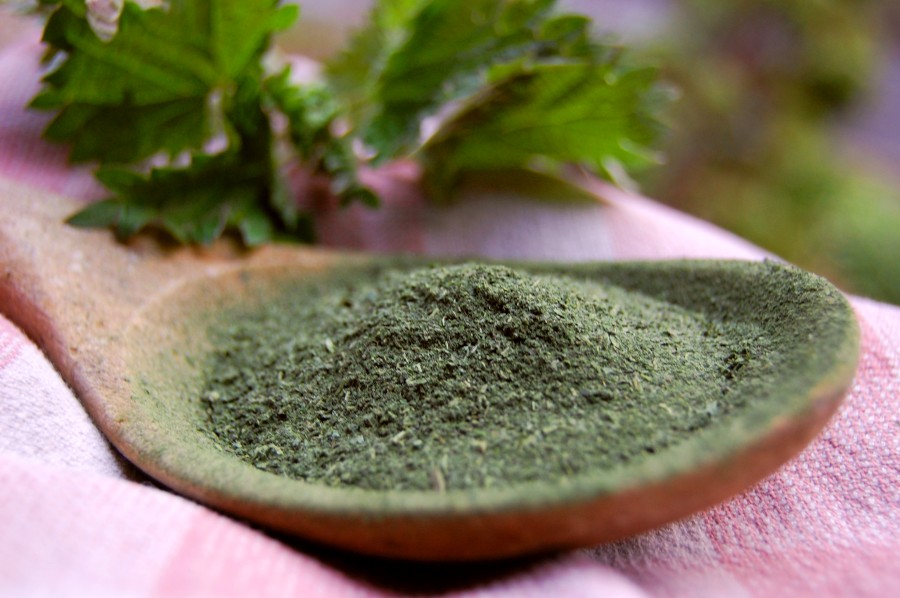How to Make Nettle Matcha Powder
Ah nettle, one of foraging’s finest but most polarizing ambassadors. Nettle (urtica dioica) is incredibly nutritious, containing many vitamins and minerals such as Vitamins A and C, calcium, iron, and a rich array of fatty and amino acids. Stinging nettle has been used all over the globe as a source of food and medicine for centuries, and there’s substantial research backing up its numerous health benefits- check out this paper for an in-depth breakdown on powdered nettle nutritional properties compared to barley and wheat. It’s also a very mild and pleasant-tasting green, unlike a lot of other Spring greens which are bitter (a taste I love but acknowledge that many don’t).

But then there’s the stinging, which tends to throw off would-be foragers. I can still remember my first time unknowingly wading through a waist-high patch of nettles in shorts. It was on a family camping trip and I imagine locals still talk about the wailing they heard from the mountaintop that day. Stinging nettle is a different beast than greenbrier patches or other prickly plants common in the woods in that its pain comes not from a physical reaction but a chemical one. The needle-like hairs lining the stem actually act similarly to a syringe when they make contact with skin, injecting you with a cocktail of substances including formic acid- the same substance found in bee stings- along with histamine and serotonin. Some cultures have a history of purposefully inducing this irritating sting, believing it useful in reducing chronic pain and inflammation. I have never tried this, but I do very much enjoy consuming the plant once its stingers have been thoroughly dealt with. If you’re a masochist, however, you could check out the raw nettle-eating contest held in England every year.
Harvesting Nettle
When it first emerges in Spring, the stinging trichomes that give Stinging Nettle its name are softer and easier to avoid. You can certainly wear gloves, but if you’re trying to harvest a lot quickly they will definitely slow you down. We’ve found that if you grasp firmly at the base of a set of leaves and confidently pinch upward, you rarely get stung. Nettles grow in abundance in lots of places, but are especially prolific in moist areas with rich soil. I gather them in mid-Spring once the leaves are large but the plants are still fairly short, grabbing the top couple of nodes, and it’s easy to gather a bagful in a few minutes. When they start to flower in Summer the trichomes are more pronounced and the leaves and stems will be much less tender. A lot of people enjoy gathering the seeds to make tea with or put into baked goods, and if you cut the plants back at this time then usually in the Fall you will get another flush of leafy growth.
Processing Nettle
The trichomes on stinging nettle are rendered harmless by cooking, dehydrating, or even crushing if you care to try them raw. Because they are easy to gather in large quantities, we have a number of ways we like to preserve them for later use. For using as a green vegetable in things like stir-fries and enchiladas, we blanche and freeze them in serving size portions (check out the end of this video for our process). The rest we dry and powder, a great method for many greens but especially those that are a bit past their tender stage. We use tongs to handle the nettles while we wash and spread them on our dehydrator trays. They seem to have less moisture content than a lot of leafy greens and usually only take a few hours to become dry enough to crumble. If you live in a dry climate you could tie them up in small bundles and hang them in a place with good ventilation.
You can crumble them in a mason jar and seal for use in smoothies, soups, and tea at this point, but I go one step further to get them as fine and smooth as possible. Using a spice grinder blends the nettle leaves into a powder, then I sift them through a fine mesh sieve to get out any larger bits of stem left over. You can use this in a lot of ways, but my favorite is to make a nettle matcha latte, a simple but very rich and satisfying beverage that tastes like Spring to me.
Nettle Matcha Latte
Ingredients:
- 1 Tbsp nettle matcha powder
- 2 cups milk (or milk alternative)
- 1 Tbsp butter (or coconut oil)
- 1 cinnamon stick and/or cardamom pod
- maple syrup or honey to taste
Preparation:
- Put all ingredients in a saucepan and heat gently until hot but not boiling, stirring occasionally.
- Strain out spices if using, pour into a blender and pulse until frothy.
- Enjoy!





 Based on 29 Review(s)
Based on 29 Review(s)